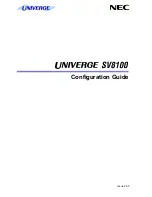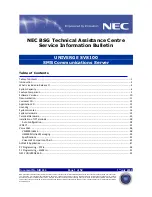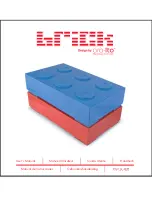
HPE
HPE Trusted Platform Module 2.0 guidelines
Trusted Platform Module 2.0 guidelines
CAUTION:
CAUTION: Always observe the guidelines in this document. Failure to follow these guidelines can cause hardware
damage or halt data access.
Hewlett Packard Enterprise
Hewlett Packard Enterprise SPECIAL REMINDER:
SPECIAL REMINDER: Before enabling TPM functionality on this system, you must ensure that your intended
use of TPM complies with relevant local laws, regulations and policies, and approvals or licenses must be obtained if applicable.
For any compliance issues arising from your operation/usage of TPM which violates the above mentioned requirement, you shall bear all
the liabilities wholly and solely. Hewlett Packard Enterprise will not be responsible for any related liabilities.
When installing or replacing a TPM, observe the following guidelines:
Do not remove an installed TPM. Once installed, the TPM becomes a permanent part of the system board.
When installing or replacing hardware, Hewlett Packard Enterprise service providers cannot enable the TPM or the encryption
technology. For security reasons, only the customer can enable these features.
When returning a system board for service replacement, do not remove the TPM from the system board. When requested, Hewlett
Packard Enterprise Service provides a TPM with the spare system board.
Any attempt to remove the cover of an installed TPM from the system board can damage the TPM cover, the TPM, and the system
board.
If the TPM is removed from the original server and powered up on a different server, all data stored in the TPM including keys will
be erased.
When using BitLocker, always retain the recovery key/password. The recovery key/password is required to complete Recovery
Mode after BitLocker detects a possible compromise of system integrity.
Hewlett Packard Enterprise is not liable for blocked data access caused by improper TPM use. For operating instructions, see the
TPM documentation or the encryption technology feature documentation provided by the operating system.
HPE Trusted Platform Module 2.0 guidelines
162
Summary of Contents for ProLiant DL360 Gen10 Plus
Page 8: ...Component identification Component identification 8...
Page 29: ...HPE Basic Drive LED definitions 29...
Page 31: ...BIOS Platform Configuration RBSU Hot plug fans 31...
Page 36: ...Operations Operations 36...
Page 47: ...Remove the secondary PCI riser cage 47...
Page 54: ...Accessing the Systems Insight Display 54...
Page 55: ...Setup Setup 55...
Page 73: ...Hardware options installation Hardware options installation 73...
Page 108: ...Installing an 8SFF optical drive 108...
Page 122: ...Secondary PCI riser options Secondary PCI riser options 122...
Page 129: ...Full length Installing an expansion board in the secondary riser cage 129...
Page 135: ...Installing a type a Smart Array storage controller option 135...
Page 140: ...Processor and heatsink options Processor and heatsink options 140...
Page 149: ...4 LFF 11 Connect the cable Installing the Systems Insight Display power module 149...
Page 160: ...HPE Trusted Platform Module 2 0 Gen10 option HPE Trusted Platform Module 2 0 Gen10 option 160...
Page 164: ...Installing the Trusted Platform Module board Installing the Trusted Platform Module board 164...
Page 167: ...4 Proceed to Preparing the server for operation Installing the TPM board and cover 167...
Page 173: ...Cabling Cabling 173...
Page 177: ...Front power SID USB cabling Front I O cabling 177...
Page 178: ...Storage cabling Storage cabling 178...
Page 181: ...8SFF x4 2SFF backplanes to type p controller 8SFF x4 2SFF backplanes to type p controller 181...
Page 183: ...2SFF x4 backplane to primary NVMe riser 2SFF x4 backplane to primary NVMe riser 183...
Page 187: ...8SFF x4 backplane direct attach 8SFF x4 backplane direct attach 187...
Page 188: ...8SFF SAS SATA backplane to embedded SATA 8SFF SAS SATA backplane to embedded SATA 188...
Page 191: ...4LFF backplane to controllers 191...
Page 192: ...Software and configuration utilities Software and configuration utilities 192...
Page 221: ...Keeping the system current Keeping the system current 221...
Page 234: ...Troubleshooting Troubleshooting 234...
Page 238: ...Removing and replacing the system battery 238...
Page 251: ...Support and other resources Support and other resources 251...
















































